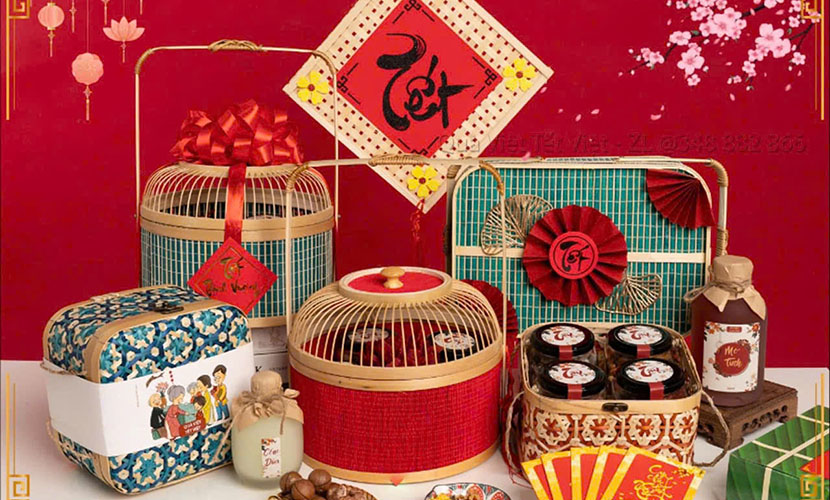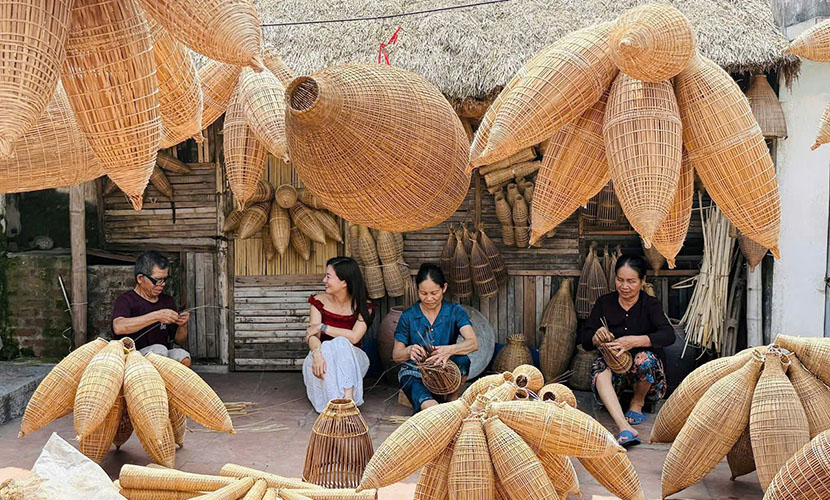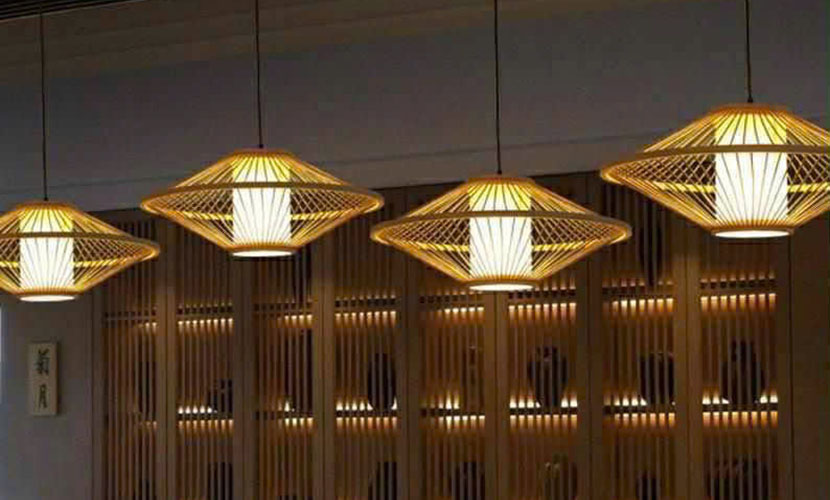
Despite earning billions of dollars in exports, Hanoi’s handicrafts continue to face shortages of raw materials. Hanoi city is actively promoting supply-demand connections to overcome these difficulties.
On the morning of August 2nd, the Hanoi Department of Industry and Trade held a conference. The conference aimed to connect supply and demand for raw materials in the handicraft industry between Hanoi and northern provinces. The event was part of the 2025 OCOP Export products Fair, held from August 1st to 3rd, 2025.

Hanoi’s handicrafts
Vietnam’s handicrafts currently reach about $3.5 billion per year, growing at a rate of about 10% annually. These products are now present in 163 countries and territories.
Main export products include ceramics, bronze items, wooden paintings, handbags, and handmade footwear. Particularly for rattan and bamboo products, Vietnam exports to many markets. In which, European countries account for 31%, the United States accounts for 20%, and Japan 9%.
However, Vietnam’s handicraft exports in general, and rattan-bamboo products in particular, face competition from other countries, including China.
Notably, Vietnamese handicraft orders have sharply declined in major markets such as the US, EU, and Japan. However, exports to emerging markets like Thailand, the Philippines, and Indonesia have increased by nearly 15%. This shows a positive shift toward diversifying export destinations.
Vietnam is facing a significant opportunity to access new markets and new sources of income. It also has the chance to share environmental, cultural, and uniquely Vietnamese values with global consumers.

Vietnamese bamboo products
The development of handicraft products in Hanoi has seen positive changes aimed at improving product quality, design, and brand building. Several products with beautiful designs and good quality have strong competitiveness in both domestic and foreign markets. They help enhance the overall competitiveness of handicraft products and boost exports.
However, the development of handicraft products still does not meet market demands, especially for export markets. The potential and value of products have not been fully exploited. A common issue among craft villages is the lack of design ideas and new product development.
In addition, unstable raw material supply, limited product diversification, and a lack of deeply processed products with high added value are among the reasons why Vietnam’s handicraft products still lack competitiveness internationally. Hanoi’s handicrafts, in particular, face these challenges as well.
According to the latest survey, Hanoi’s rattan-bamboo craft villages consume about 6,800 tons of raw materials annually. This highlights the significant scale of raw material use in these craft villages.
On average, a company consumes about 50 tons of raw materials per month, while households consume around 20 tons per month. Ceramic craft villages consume about 620,000 tons of raw materials, mainly clay and kaolin. Laccquerware villages consume about 4,000 tons and wood craft villages consume 1,000,000 m³ of wood.
Raw material supply is a crucial factor for Vietnam’s craft villages. To support craft villages and enterprises, Hanoi has reviewed and developed stable local raw material supply areas to ensure partial supply for the city’s craft villages.
It has also planned sustainable raw material zones from domestic provinces, regional countries, and worldwide. These zones aim to meet the production requirements of craft villages in the capital.
At the same time, Hanoi is developing wholesale markets for raw materials for craft villages and specialized supply models for raw material processing. The city is also working to improve material usage efficiency, reduce loss, and avoid waste.

Vietnam’s lampshade
Hanoi has coordinated with the northern provinces to organize the supply-demand connection conference for raw materials. Through the conference, enterprises from Hanoi and northern provinces can meet, seek stable, long-term, and quality partners for raw material supply and semi-finished product processing.
Moreover, the conference provides opportunities for northern enterprises and production establishments to find buyers and expand production. It also supports processing semi-finished products for the handicraft industry, creating sustainable jobs and income for rural areas.
At the conference, delegates introduced the potential, strengths, and raw material supply connection needs of handicraft industries in northern provinces and cities. They also exchanged and connected enterprises from Hanoi and northern provinces.
Within the conference framework, a cooperation agreement was signed to connect raw material supply between Hanoi and northern provinces.
Vietnamese source: https://congthuong.vn/xuat-khau-ty-usd-thu-cong-my-nghe-ha-noi-van-vuong-dau-vao-413311.html
